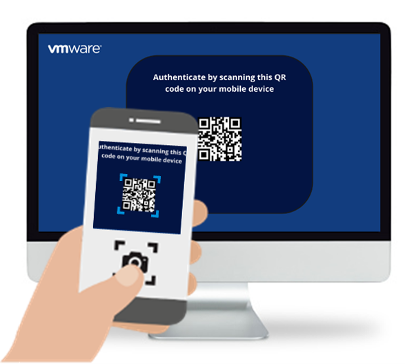by: VMware Director, Global AV and Events, Josh Burton, VMware Multimedia Solutions Architect Felipe Giannazzo, and VMware Senior Manager, Multimedia Engineering Vipin Nair
The concept of having a conference room meeting has changed radically over the years thanks to advances in technology, the effects of the global pandemic, and the proliferation of hybrid work environments. And while today’s corporate meetings are more inclusive than ever (anyone with a device/connection can attend), there are still drawbacks that inhibit productivity and the overall collaborative experience.
A less-than-ideal experience

Conference room software commonly features its own ecosystem, with its own form of whiteboarding and which devices/apps the system will ‘talk to.’ This is not a bad thing in and of itself, but it presents limitations when attendees, especially nonemployees, do not have the requisite devices or compatible software.
For example, suppose an attendee wants to employ a third-party app on their device. Sharing is possible, but direct interaction via touch and/or a digitizer is spotty at best, essentially negating any benefits the app may have offered. Likewise, most conference room software does not allow for built-in overlays of meeting video and controls while using the virtual whiteboard. Participants must close the whiteboard feature to employ other functions, an inconvenient annoyance during any discussion. This frustration is further compounded by the fact laptops must be dedicated to meeting slides and/or the whiteboard, versus offloading those issues to a shared device.
Another chronic problem users report is that pen-enabled touchscreens often fail to work as intended, with inputs either misunderstood or denied altogether. This drawback is made worse when a meeting requires multiple pen mapping—the system gets confused or simply overwrites the previous input from a different pen.
Room for improvement

VMware is reinventing the conference room meeting—and mitigating its challenges—by introducing a variety of advanced capabilities, both proprietary and from third parties, that enable a truly seamless experience.
It starts by simplifying the login process for mobile users—there is no need to search for a password sent days or weeks earlier. Just scan a QR code. See figure 1.

Once verified, the user—in this case John Smith—is then taken to an easy-to-understand landing page automatically customized to his needs. John is never shown other meetings or apps not relevant to his requirements. He can start a meeting, join one, or open up additional material needed for an upcoming meeting. Again, there is no need to search through emails or files to find what’s needed—everything is right there. See figure 2.

After John decides to attend a meeting, he is presented with an intuitive interface that eliminates confusion as to what each control does. Meeting mandatories (such as wearing a mask if in person) are clearly posted, and help/how-to guides are just a QR code away. See figure 3.

We’re just getting started
Within the meeting is where the VMware approach really shines. Thanks to VMware Workspace ONE® trust methodologies, attendees realize a frictionless hand-off authentication process. This enables just-in-time provisioning to a full range of the attendee’s web apps—the system removes limitations inherent in conference room software sandboxes that may only allow certain apps. It’s similar to an in-vehicle infotainment system that offers seamless access to Apple CarPlay, Android Auto, Pandora, Sirius XM, etc. versus only connecting with a select few.
Additional features include the ability to wipe user data upon session termination, always-accessible meeting video and controls, and the elimination of forced disruption when attendees want to concurrently use other functions. Plus, there are never any conflicts with ‘incompatible’ software or devices as with traditional approaches.
Seamless asynchronous collaboration regardless of device used (mobile cell, desktop, tablet) ensures all participants are able to fully participate—without concern for geography or time. The software client is native to most platforms, so there are no issues with incompatibility or inconsistent connections. Whiteboarding itself is dynamic, and can incorporate any size display, opening up virtual collaboration possibilities to much larger groups. Remote participants no longer feel like they are losing out on what is being presented.
Much of what is discussed in this blog is being deployed on a wider scale after successful Proof of Concept (PoC) pilot programs. Therefore, be sure and check back for updates as our journey continues. In the meantime, contact your sales rep or vmwonvmw@vmware.com to schedule a 1:1 briefing on this topic.
VMware on VMware blogs are written by IT subject matter experts sharing stories about our digital transformation using VMware products and services in a global production environment. Visit the VMware on VMware microsite and follow us on Twitter.



